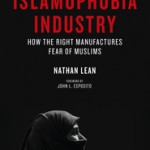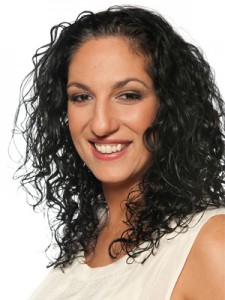After graduating and finding myself sub-employed in the world of retail, I have had the opportunity to closely explore the cosmetics industry. While in university I acquired my Makeup Artistry certification from a recognized school in Canada because I enjoyed colour and makeup so much. Since I was a child I enjoyed playing with my mom’s cosmetics, and I used to long for the day that I would be allowed to wear lipsticks and eye shadows.
Yet, after working so closely in the cosmetics industry, it is easy to see the challenges that come along with gender and the politics of ethnicity, which, I must admit, have made my love for makeup wane.
The cosmetics industry is often a place where beauty standards are created, defined and imposed. It is based on dreams (and training materials often indicate: “sell dreams, not products”) and on the idea that women need “help” to be beautiful or even to look healthy (thus the creams and treatments).
Cosmetics companies contribute to ideas of hegemonic beauty while exploiting them for profit. Whereas this is not surprising, the profit that comes from individual cosmetic counters is enormous. In North America (including Canada, the U.S. and Mexico) stores such as Sears, the Bay, Macy’s, and Holt Renfrew, and their associates set daily targets ranging between $100 and $5000 dollars for each individual beauty advisor in a counter (thus the annoying cosmetics ladies chasing you around, especially on slow days).
While working at the counter, I have realized that a large portion of my clients are Muslim women; nonetheless, the industry does not seem to acknowledge this trend. As I have explored in previous posts, Muslim women have claimed a place as designers, models and stakeholders within the fashion industry; however, they hardly seem to have a place in typical Western-style cosmetic houses.
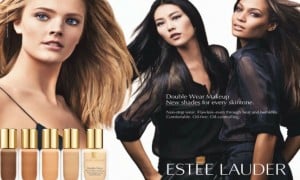
Despite the options, big Western cosmetic brands like Estee Lauder and Lancôme are popular options around the world, including some Muslim-majority countries. For instance, the Gulf countries, of which the UAE is often recognized as the fashion capital, are now a big cosmetics market. Not only did Vogue choose the Emirates to open a high-end café outpost, but last year it was reported that Emirati women spend 38% more money in cosmetics than women in France.
Even without mentioning issues of animal testing, dangerous chemicals in treatments or ingredients that may be of particular concern to some Muslim women like pork by-products and alcohol, the industry as a whole presents challenges. For example, although houses like Clinique and Estee Lauder currently offer wider selection of makeup colours (such as foundations), many other makeup houses would not be able to colour-match a lot of non-white women, leaving out a whole bunch of ethnicities. Besides, even when these two brands offer slightly more colour options, cosmetics training in Western countries focuses on whiter demographics or the target ethnic market of the brand (for example, Shideido tends to focus on Asian women), which means that your average Western-trained cosmetics consultant has no idea how to help women with non-Caucasian complexions.
What is more, many Muslim women (although not all) go along with the trend. Lighter makeup and “brightening” and whitening products are popular not only among South and East Asian populations but also in other countries, of which Nigeria is the highest consumer. Whitening and lightening products are used to prevent and treat pigmentation, while brightening ones treat dullness and fatigue. However, these products tend to promise a “brighter,” “lighter” and “better” complexion, whatever that means. As one of my clients put it once: “they make us feel that whiter is beautiful and we go with it.”
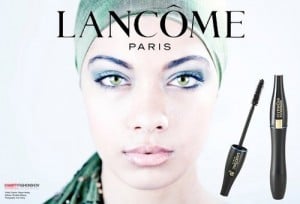
Racialized notions of what women should aim for are sometimes more obvious when dealing with niqabis in North American cosmetic counters. A few years ago, while I was shopping with a niqabi friend, we decided to stop at MAC. She was looking for a concealer, but instead of being allowed to choose the color she thought would suit her, the cosmetics girl decided to give her a darker shade, while assuring her that it has the right colour. The cosmetics girl just assumed that niqab equals East and East equals dark.
In addition, imaging continues to be a problem. One would think that with Muslim women spending great amounts of money in cosmetics, these houses would broaden the images that they use in their advertisements. Yet, we see mainly white-Western models, rarely one or two “minorities” and of course (almost) no hijabis.
Just like with Barbie or “Muslim” Barbie, whom I discussed few weeks ago, the cosmetics industry calls for particular standards. It teaches us that “whiter” is more valuable, even when the majority of the market is non-white, and it also endorses that Western is better (many of us still believe that French equals better cosmetics, Chanel being one example).
The reality is that this is an industry that it is not about to change. The companies involved strongly rely on the fact that we follow their trends and accept their imaging. However, there are alternatives out there. Most countries have locally produced cosmetics, and while I cannot speak for all of them, I can tell you that Mexico produces some excellent no-name avocado oil mascaras and eye liners!
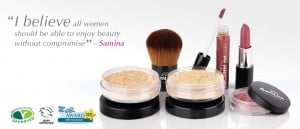
Likewise, I have come across few lines designed by Muslim women for Muslim women. Some of these brands, which have been reviewed on sites like Muslimah in Reverie and Sweet Modesty are often defined as “halal” options and are not only alcohol- and pork-free but also cruelty-free. Some of these also provide mineral and vegan options.
Though I cannot guarantee that representations of diverse women in their advertising images will be better among these brands, at least there is an effort to accommodate Muslim women of a variety of ethnicities, and an attempt to address some Muslim women’s concerns as far as alcohol, pork and cruelty goes.
My hope for the ladies who enjoy cosmetics is that eventually they will use cosmetics for and by themselves, not because companies “sell dreams” and “aids” for non-white, non-Western, non-young imperfections.


